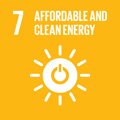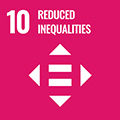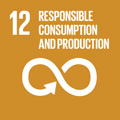- Docente: Emanuela Randon
- Credits: 8
- SSD: SECS-P/03
- Language: Italian
- Moduli: Emanuela Randon (Modulo 1) Alessandro Tavoni (Modulo 2)
- Teaching Mode: In-person learning (entirely or partially) (Modulo 1); In-person learning (entirely or partially) (Modulo 2)
- Campus: Rimini
- Corso: First cycle degree programme (L) in Economics of Tourism (cod. 8847)
Learning outcomes
The course starts with an exposition of the different market failures (externalities, public goods, market power, asymmetric information), with emphasis on tourism and environmental issues. The course then focuses on taxation policies as remedy to market inefficiencies. After a general introduction on taxation principles, the student will learn the most advances in environmental taxation in promoting green growth as well as the most recent applications of taxation on tourism sector (road tax, tourist tax, congestion pricing).
Course contents
PART 1
1 Introduction
Reasons for government interventions. Market failures. Normative vs positive economics.
Paternalism vs individual failures.
2 Externalities and Public Goods
Problems and Solutions. Environmental and Health Externalities. Applications to tourism sector.
3 Principal indices of public finance
Taxes and spending: descriptive statistics. Government budgeting.
4 Taxation in Theory and Practice
Taxation in Europe and around the world
Tax inefficiencies and their implications for optimal taxation. Tax incidence.
The equity implications of taxation: income distribution, transfers, welfare programs
Taxes on labour supply, consumption, savings.
Taxation and tourism market
PART II (Prof. Tavoni)
1: Fundamentals of Game Theory and Insights for Environmental Management
Social dilemmas. Social interactions. Social Norms. Behavioral game theory. Behavioral fallacies. Lessons for policymakers.
2: Environmental Policies
Correcting local externalities: Cooperation in the local commons. Correcting global externalities: International Environmental Agreements and Carbon Taxes. Theory and Applications in the Lab. Class Experiments. Theory and Applications in the Field.
3: The Role of Policy in Fostering the Diffusion of Low-Carbon Goods and Technologies
Encouraging the demand of environmentally friendly products via subsidies and taxes. Patents and innovation. Climate change mitigation. Marginal abatement curves. Environmental Kuznets Curve.
Readings/Bibliography
Part I: Jonathan Gruber, Public Finance and Public Policy, Fifth Edition, 2016, Worth Publishers, Chapter:
1,2,4,6,7,18, 19, 20, 21.
Part II: Chapters 4, 16, 20 from CORE Economics textbook: freely available at: https://www.core-econ.org/the-economy/book/text/0-3-contents.html . Assigned readings and lecture material.
Teaching methods
The course will be a combination of frontal lectures and student presentations.
Assessment methods
The exam is divided into two parts. Each part is a written test of 45 minutes. It is based on 2 open essay-style questions (4.5 points each question), 1 exercise (3 points) and 4 multiple choices (1 point each question). The maximum score attainable in each part is 16/32.
Notes or other materials are not allowed.
Grading is as follows:
- <18 fail
- 18-23 pass
- 24-27 good
- 28-30 very good
- 30L excellent
Students can reject the grade obtained at the exam only twice. To this end, he/she must email a request to the instructor within the date set for registration. The instructor will confirm reception of the request within the same date. In the case of partial exams, rejection is intended with respect to the whole exam, whose grade is the average of the grades obtained in the two mid-terms: if the grade is rejected, the student must retake the full exam (consisting of both parts).
Office hours
See the website of Emanuela Randon
See the website of Alessandro Tavoni
SDGs




This teaching activity contributes to the achievement of the Sustainable Development Goals of the UN 2030 Agenda.
